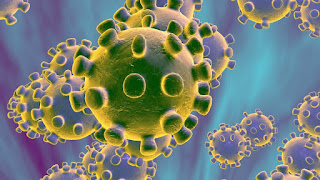Coronavirus
According to the World Health Organization (WHO), Coronaviruses make up a large family of viruses that can infect birds and mammals, including humans. While some coronaviruses have caused devastating epidemics, other cause mild to moderate respiratory infections, like the common cold. The most notorious being the severe acute respiratory syndrome (SARS) pandemic of 2002-2003 and the lesser-known Middle East respiratory syndrome (MERS) outbreak in South Korean in 2015. However, the most recent, a novel coronavirus (2019-nCoV) that started in Wuhan, China this past December has triggered a worldwide concern. A few coronaviruses utilize animals as their primary hosts and have evolved to infect humans. Precursors to both SARS and MERS coronaviruses appear in bats. The SARS virus jumped from bats to civets (small, nocturnal mammals) on its way into people, while MERS infected camels before spreading to humans. Evidence suggests that the novel coronavirus also jumped from bats to humans after passing through an intermediate carrier, although scientists have not yet identified the infectious middleman creature. Coronaviruses are transmitted between humans through respiratory droplets that infected people let out when they breathe, cough or sneeze. While one sees the public wearing mask everywhere, a typical surgical mask cannot block out the viral particles contained in these droplets. However, according to the Center for Disease Control (CDC), simple measures, such as washing your hands, disinfecting frequently touched surfaces and objects, and avoiding touching your face, eyes, and mouth, can greatly lower your risk of infection. In humans, coronaviruses typically cause a respiratory infection with mild to severe flu-like symptoms, but the exact symptoms vary depending on the type of coronavirus. The reason why coronavirus is of interest to me is that my paternal grandmother is a hypochondriac. When she caught a slight cold last week, she is convinced that she contracted the coronavirus even though she has had no contact with anyone with the disease. Both my dad and uncle were microbiology majors in college and my uncle worked for Johnson and Johnson until his recent retirement, neither was able to convince my grandmother that she does not have the virus. She went to the doctor and had them do a complete examination, including a chest x-ray to make sure she does not have the disease! Doctors can test their patients for coronavirus infections by analyzing respiratory specimens and serum isolated from their blood, according to the CDC. The CDC has developed an equivalent diagnostic test for the novel coronavirus. Recently, hundreds of these kits were sent to healthcare workers to help and expedite the testing of the coronavirus. There are no available treatments for any human coronavirus, according to the CDC. Those who catch a common coronavirus usually recover on their own and can ease the process by taking pain and fever medications, using a humidifier, taking hot showers, drinking plenty of fluids and staying home to rest. Similar regimens are used to relieve the symptoms of more severe coronavirus infections. While the virus is of concern, we should not get carried away with all the hype. Hand washing and cleanliness are the best protection against this disease.



Comments
Post a Comment